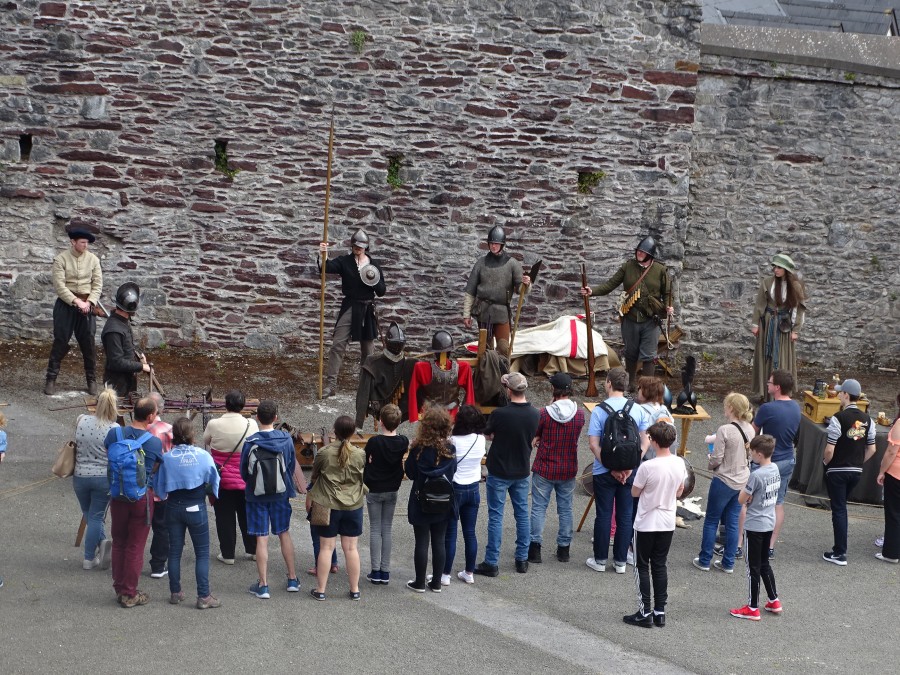
Kieran’s Our City, Our Town Article,
Cork Independent, 30 August 2018
Kieran’s New Book Cork in 50 Buildings
My new book Cork in 50 Buildings (2018, Amberley Publishing) explores the history of this venerable old city through a selection of its greatest architectural treasures, from the St Anne’s Church, Shandon, regarded as a symbol of the city, to more recent additions such as the tower of the County Hall, once the tallest building in Ireland. This book offers a glimpse to explore behind fifty of Cork’s historic buildings.
The city of Cork is a place of tradition, continuity, change and legacy. It is a place of direction and experiment by people of ambition and determination, experiences and learning, of ingenuity and innovation, and of nostalgia and memory. Its extraordinary history is embodied in the buildings that have shaped Ireland’s southern capital.
The biggest challenge for me was to pick a mixture of buildings that should be in this book but also ones, which I do not often get to write about or show on my historical walking tours. Whether or which, this book builds on my previous publications, takes strands of articles from this ongoing local history column, Our City, Our Town. It is also inspired by the annual Cork Heritage Open Day, which is organised by Cork City Council and where over 40 buildings open their doors to the public for one day at the start of National Heritage Week.
This book highlights just some of my favourite buildings and stories that have charmed me. It presents a contextual history of buildings and comments on the buildings’ economic expressions, use of narratives, symbols and metaphors and the social environment. There is a great need to highlight the need for more research on the city’s historic structures, a mapping out of them and to continue to identify new ways of celebrating, managing and championing our built heritage.
Eminent Cork Writer Daniel Corkery’s account of Cork in The Threshold of Quiet (1917) has always resonated strongly with me.
“Leaving us, the summer visitor says in his good-humoured way that Cork is quite a busy place…as hundrum a collection of odds and ends as ever went by the name of city – are flung higgledy piggledy together into a narrow double-streamed, many bridged river valley, jostled and jostling, so compacted that the mass throws throws up a froth and flurry that confuses the stray visitor…for him this is Cork”.
The words “higgledy piggledy” for me best describes the urban fabric of Cork. The mixed “collection of odds and ends” reflects the manner of the city’s evolution. It was built in a piecemeal way by a combination of native and outside influences, its ever-changing townscape and society shaped by different cultures since its origin as a monastic settlement. Cork possesses a unique character, derived from a combination of its plan, topography, built fabric and location.
It is unique among other Irish cities in that it alone has experienced all phases of Irish urban development, from c.AD600 to the present day. The settlement at Cork began as a monastic centre in the seventh century, founded by St FinBarre. It served as a Viking trading post before the Anglo-Normans arrived and created a prosperous walled town. It grew through the influx of English colonists during the sixteenth and seventeenth centuries and suffered the political problems inherent in Irish society at that time. It was altered significantly through Georgian and Victorian times when reclamation of its marshes became a priority, as well as the construction of spacious streets and grand town houses; its quays, docks and warehouses exhibit the impact of the industrial revolution; and in the last one hundred years, Corkonians have witnessed both the growth of extensive suburbs and the rejuvenation of the inner city. Built on the surrounding valleysides of the River Lee, the city’s suburbs are the result of a spiralling population in the twentieth century.
Perhaps, the most important influence on the city’s development was and is the River Lee, which has witnessed the city’s growth from a monastic centre to a cosmopolitan twenty-first-century city. Originally, Cork comprised a series of marshy islands, which the Irish for the city, Corcaigh, or marshes, reflects. Just west of the city centre the Lee splits into two channels, each flowing around the city before meeting again in Cork harbour. This means the city centre is an island, bounded by a north channel and a south channel. The urban centre was built on the lowest crossing-point of the river, where it meets the sea. This situation has given the city a rich maritime history and a strong identification as a port town complete with old warehouses.
With the past of a port city, Cork’s architecture has a personality that is varied and much is hidden amongst the city’s narrow streets and laneways. Much of its architecture is inspired by international styles – the British style of artwork and nineteenth century brick pervading in most cases– but it always pays to look up in Cork and marvel at the Amsterdamesque-style of our eighteenth-century structures on streets such as Oliver Plunkett Street or at the gorgeous tall spires of the city’s nineteenth-century churches. Cork’s most fascinating buildings ranging from the medieval to the military, the civic to the commercial and the educational to the ecclesiastical.
Cork in 50 Buildings by Kieran McCarthy is available online to purchase https://www.amberley-books.com or in any good Cork bookshop. Support local bookshops.
Captions:
961a. Front cover of Cork in 50 Buildings by Kieran McCarthy
961b. Re-enactment at Elizabeth Fort for the recent Cork Heritage Open Day, one of the sites in Kieran’s new book Cork in 50 Buildings (picture: Kieran McCarthy)
